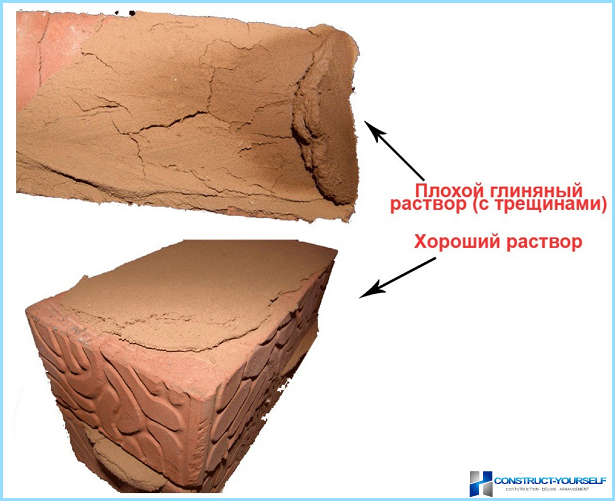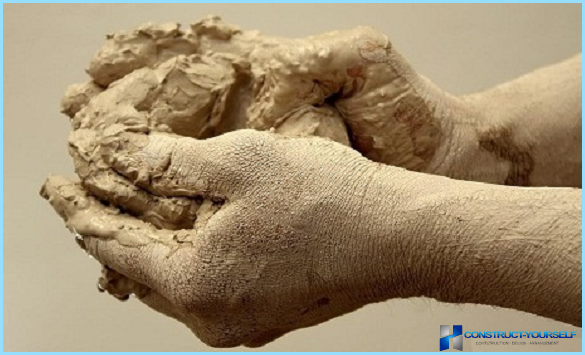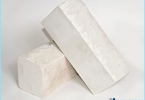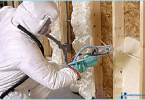The contents
- The difference from conventional chamotte brick ceramic
- A good way of laying fireclay in solutions of different formulations
- The compositions of mortar for masonry of various parts of the furnace
- Recipes clay mortar for masonry of chamotte bricks
- Mortar for masonry of chamotte
- Mortar pan furnace
- Use of compounds for masonry of chamotte industrial preparation
Masonry refractory block is one of the most difficult professional challenges for any of a Mason, often each setter of your proven secrets of the preparation and use of mortar for masonry of chamotte bricks. A lot of these secrets has no clear explanation, but if you have patience and common sense you can pick up mortar for masonry without any hidden tricks.
Chemistry and teplomekhanika refractory mixes is very difficult for perception and understanding. In a domestic environment there is no possibility to check and adjust the composition of the mortar for masonry of chamotte bricks, so a lot is done «to the eye» and often remade several times until the desired result is achieved.
The difference from conventional chamotte brick ceramic ↑
Fireclay brick is not to be confused with any other unit, even with other refractories. Mostly yellow or light yellow color, with a whitish tinge. The main difference between the fireclay bricks – high content of aluminum oxide in different chemical forms and modifications.
In comparison with a ceramic brick with high content of iron oxide and silicon oxide, the refractory brick has its own characteristics that affect its stability:
- High porosity of the surface of the block, but these pores are very small, they does not penetrate the solution, but good moisture and air;
- Coefficient of thermal expansion of each brick is individual and will require difficult and painstaking selection of the composition of mortar for masonry;
- Refractoriness and plasticity of refractory bricks largely depends on the mode of operation of the furnace, and not from the solution composition or method of masonry.
. 
A good way of laying fireclay in solutions of different formulations ↑
The method is not very popular among professional Pechnikov, many criticize him for excessive, unnecessary complexity, but for the Amateur it is often the only way to compensate for the errors of masonry.
Fireclay is a good insulator, very hard and stressful brick, he successfully withstands high temperature for long time. But under one condition – gradual warming and cooling, thus reducing the destructive action of internal stresses. But in practice this is only possible for industrial furnaces.
The essence of the method lies in the fact that the choice of what mixture, put fireclay, is determined by its location in the furnace. For the pallet, side walls and arch of the furnace is better to use a different formulation of the solution. It’s uncomfortable, you will need three times more time to complete work, but gives good results. If everything is put on one part of the solution, most likely, a year will have to shift the arch of the furnace or belt bricklaying near podduvalom.
At home the stove to extend the life of the fireclay is possible, by varying the thickness of the ligaments and the composition of the mortar. If the stove is designed for wood, for example, for a small country option, fireclay can be folded on one part with 10% clay content and replace 15% of the sand is fine fireclay powder.
The mortar for brick masonry in the bath, going to the masonry series under the stove and the heat of the steam room, it is better to reduce the content of chamotte to a minimum and doubling of the clay content, laying fireclay to perform «on the end» with ligation of ceramic bricks in clay mortar.
The compositions of mortar for masonry of various parts of furnaces ↑
Thermal regime of each of the elements of the furnace requires the use of your solution. For example, it makes no sense to use the proportions of the composition of the ligaments of the lining of fireclay in the preparation of mortar for masonry chimney made of brick. Moreover, she is laying even simple stoves or fireplaces takes at least five to seven days, and the prepared solution in the course of the day should as often as possible to mix – to kill and to adjust the moisture content.

Recipes clay mortar for masonry of chamotte bricks ↑
In the heater case is considered a classical composition based on clay and cement-sand compositions. Clay, due to the high content of water makes the mortar is soft and plastic. The same about the seam is, so it is necessary to add when laying the firebrick in the corner of the ligaments, in areas of the air supply and flue.
For cooler blew and the bottom row of fireclay adjacent to the tray, the amount of clay in the solution should be the maximum of the suggested recipes. Usually in a mixture of two parts of cement added to one part clay and two parts of refractory powder fraction from 1 mm to 0.1 mm.
If the seam is too brittle, the clay add a very small amount of washed white sand, about 1/5 the amount of clay, 1/10 fine refractory powder and 15-20gr of soap.

Clay is poured a small amount of water with the dissolved soap and within an hour cut the bayonet, entrenching shovel or similar suitable tool, adding the sand and fireclay in small portions. This procedure will make the clay more «easy» and plastic, but to use the solution is necessary for no more than 3 hours.
Mortar for masonry of chamotte ↑
The masonry of chamotte main firebox should not be more than two rows per day, and the first row it is better to endure a couple of days for alignment and precipitation of the seam. To prepare the mixture, use the previous technique, but the sand from the composition it is better to avoid completely. Laying the first three rows of the furnace it is desirable to perform a mixture with an additive liquid glass, and to increase the content of refractory powder at least twice, this will increase the strength and rigidity of the weld, but will increase the tendency to form cracks.
As in the case of ceramic, the durability of the masonry and the strength of the weld depends on the quality of the clay. You can’t take very fat and plastic clay, it has a large content of hydrated compounds of silicon and iron, which has a bad effect on the future state of the masonry, increasing the shrinkage and cracks.
Skinny varieties of clay are not suitable for solution, they will not shrink, but the strength will not be the solution crumble within a couple of weeks after curing. A reasonable balance can only be determined by practical tests with drying and heating.
Rich clay will go into solution, like soap, skinny varieties are very bad limp even under the influence of mechanical forces.

The complexity of preparation of the mixture for masonry associated with the need to maintain the required consistency of mortar. Sodium silicate gives the compounds increased adhesion, but decreases its ductility. Most often, the viscosity of the composition is selected empirically so that the height of the seam under the weight of the firebrick is not reduced more than 10mm.
About the same composition of the solution used for the chimney of brick, but more viscous consistency.
Mortar pan furnaces ↑
Working conditions fireclay brick demand high heat resistance of the connection with minimum size welds at the highest possible adhesion strength. Often refractory bricks laid at the base of the furnace, glued specific solution of a mixture of liquid glass – 1 part, fine powder of sawdust brick – 5 parts, refractory clays – part 2.
The consistency of the solution – a creamy, viscous mixture – too bad, but they will not give the minimum dimensions of the joint, and it is. To check the quality of adhesion of the binder brick moistened with water, and throw on the end of a small portion of the batch. Accordingly, when the right mix of consistency and the proportions of mortar for fireclay brick shall not drain or fall off from the brick surface.
Use of compounds for masonry of chamotte industrial preparation ↑
In industry to produce dry mixture for preparation of a batch under the fireclay brick. This mixture is called mortar and is a mechanical mixture of the following components:
- Refractory dry dust, as a rule, obtained by firing at plants of refractory materials, it is more active in the grip than the powder from the grinding sub-standard refractory brick;
- Cohomology white bentonite clay with a high content, up to 25% alpha-alumina;
- The dry powder of sodium silicate or liquid glass;
- Plasticizing additives based on water-soluble polymers.
The average consumption is around 20 kg per hundred fireclay brick. When the right consistency gives bead 6-8mm.

Conclusion ↑
If you have no experience with the preparation of bundles and the masonry of chamotte, use of ready mix and the old Soviet chamotte refractory. For reviews Pechnikov, the average quality of the solution on the basis of a good Soviet mortar and fireclay will not fail even in Amateur laying.







